FutureMusic subjected the Focal Alpha 65 Evo active monitors to a long-term test with six different reviewers. In one of our longest evaluations to date, we found the Focal’s to deliver on their promise to provide a quality near-field monitor at a budget-friendly price. Our reviewers come mostly from electronic music and hip-hop backgrounds, with one sound designer thrown in for good measure, their impressions in quotes below.
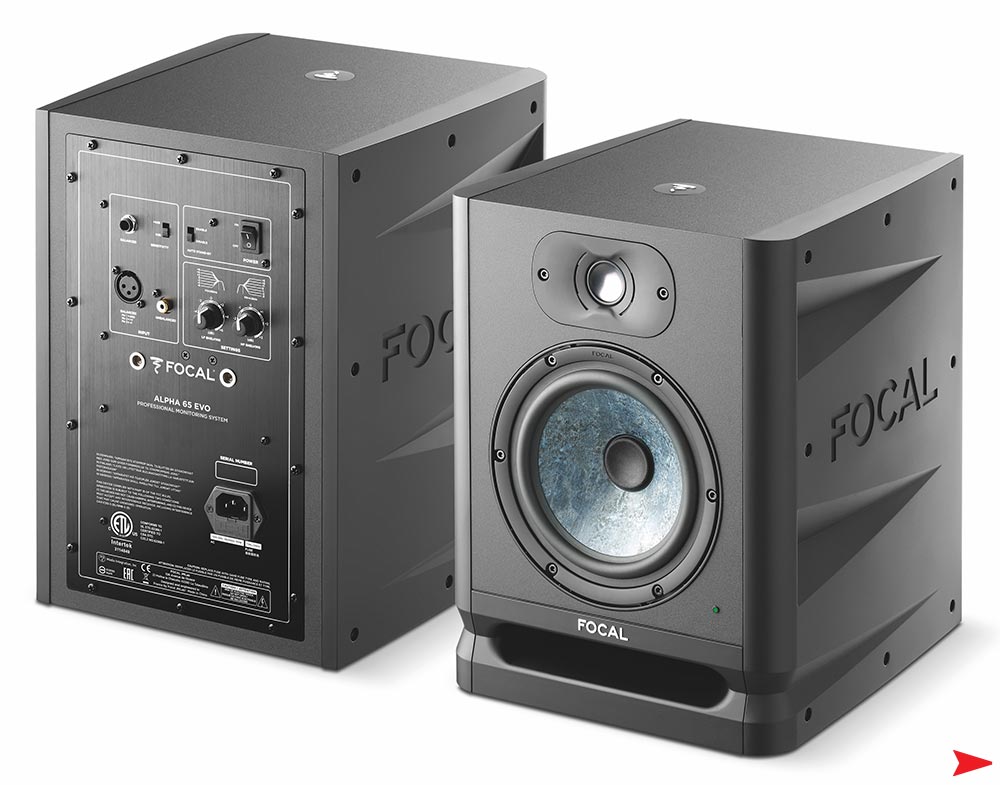
The Alpha Evo’s evolved out of Focal’s Alpha 50, 65 and 80 monitors that debuted seven years ago. At the time, Focal was looking to upgrade their entry-level CMS monitors and developed the Alpha line to incorporate some of the technologies developed for their higher-end models. The new Evo 50 and 65 is almost complete redesign from the original Alpha’s, while the Alpha 80 Evo just received an upgrade.
The most noticeable change is the woofer design, which replaces the Polyglass cones in the original Alpha’s with Slatefiber, a new material designed by Focal. Slatefiber is comprised of recycled, non-woven carbon fibers blended with thermoplastic polymer to bind the fibers together and provide a more rigid profile. For some reason, pictures of the woofer cones have a blue hue, but our review units were more “battleship gray” in appearance. The center dome dust cap is inverted. Focal doesn’t address this decision, but it may be an aesthetic complement the inverted aluminum tweeter, since most of their other offerings have conventional domes. Focal claims Slatefiber provides low distortion, enhanced dampening and sound neutrality. The technology was originally developed for Focal’s high-fidelity, home stereo speakers and migrated to the new Evo line.
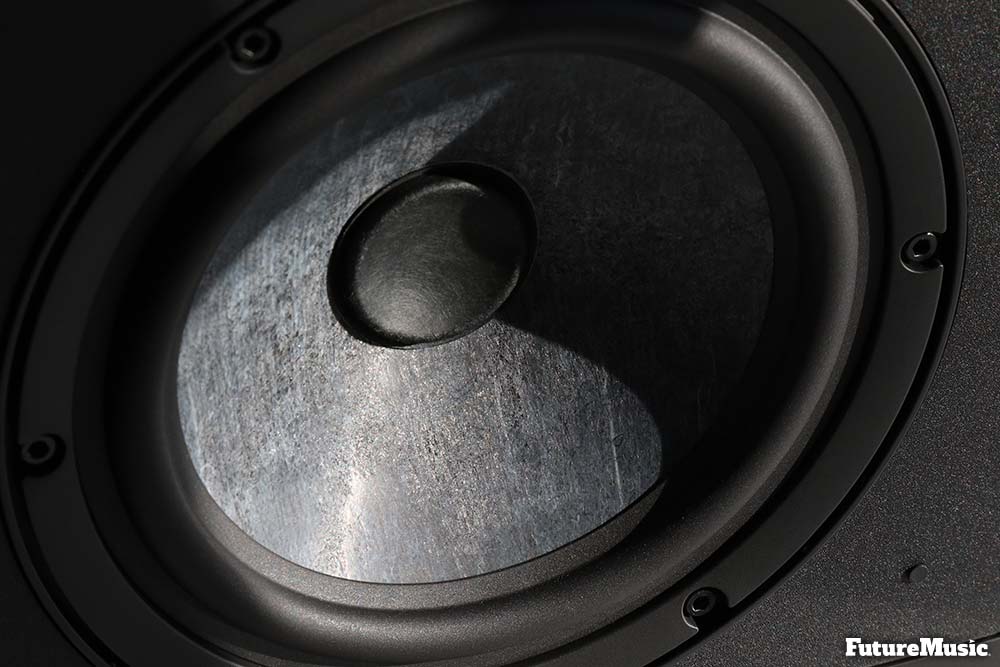
Visually, the new 65 Evo’s have “a Terminator” appearance with a gray, vinyl-covered MDF cabinet. Three inverted triangles extend from the tweeter, woofer and the laminar bass port towards the back with six exposed screws on the perimeter. “Personally, I really like the appearance of the Evo’s,” stated one evaluator, “clearly, the sound is what you’re after when shopping for monitors, but these are handsome units that don’t say ‘entry-level.'” Focal should be commended for putting the effort in to give the 65 Evo a “refined” and “mature” look “without caving to flamboyant neon colors” or “bright-colored woofers that scream ‘look at me!'” like some competitors. The indented triangles are also functional, “providing nice grip points” when moving the 17 lbs. units.
Focal moved from the two high–current Class AB amplifiers (70W for the bass and 35W for the treble) to bi-amped Class D affairs in the new 65 Evo. Focal contends that the new approach matches better performance-wise than the previous design due to the fact that “the equivalent Class AB amplifiers on the market were not as good as the Class D we found, note that all filters [are] full analog though.” I’ll allow it, counsel.
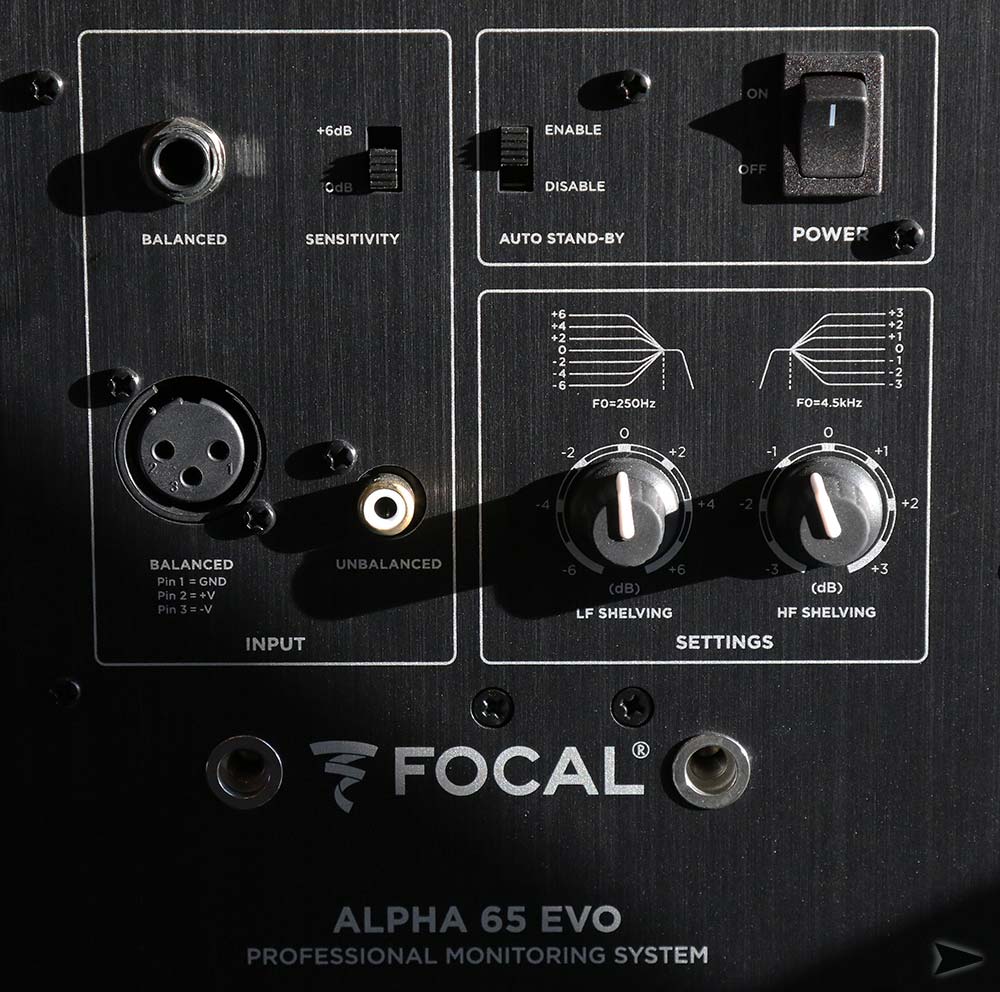
Focal 65 Evo Specifications & Features:
- Frequency response: (+/- 3dB) 40Hz – 22kHz
- Maximum SPL 104dB SPL (peak @ 1m)
- Connectivity: TRS: symmetrical 10kOhms | XLR: symmetrical 10kOhms | RCA: asymmetrical 10kOhms with compensated sensitivity
- Medium and low frequency amplifier: 55W
- High frequency amplifier: 30W
- Stand-by mode (Sleep): After approx. 15 minutes of no use monitors go to sleep (By signal detection >6mV) | Stand-by consumption <0.5W
- Power supply 100 – 240V~ (T2AL fuse/250V)
- Connection IEC socket and detachable power cable
- Sensitivity Adjustable, 0 or +6dB
- Level midrange/bass (0 – 250Hz) Adjustable, +/-6dB
- Treble level (4.5 – 35kHz) Adjustable, +/-3dB
- Power on/off switch on the rear panel
- On and off LED + Stand-by LED
- Woofer 6.5″ (16.5cm) Slatefiber cone
- Tweeter 25mm (1″) with aluminum inverted dome
- Construction 0.6″ (15mm) MDF with black vinyl and paint
- Dimensions with four rubber feet (HxWxD): 13.35×10.28×11.38″ / (339x261x289mm)
- Weight: 16.8 lbs (7.6kg)
Focal added a third connectivity option, TRS, to the RCA and XLR inputs that were on the Alpha 65. Also available on the rear panels are HF and LF shelving controls +/- 6dB at 250 Hz and +/- 3dB at 4.5 kHz, and a switch to toggle the Sensitivity between 0 dB and +6 dB, allowing users to tune the Alpha 65 Evo’s to their specific room. This can be especially effective when contending with problematic placement or combating unwanted reflections. Focal added a Sleep feature that turns off the power after 15 minutes of nonuse. This can be turned on or off based on preference. “Some times you need to pump the volume to wake the Focal’s from their slumber, but I found this to be a useful feature,” offered one of our evaluators.
Finally, the bass port has been modified from the previous two-port system to single flared wide slot on the bottom similar to Focal’s Trio6 BE, Twin6 BE and Solo6 BE. This Laminar design is said to promote better air flow, resulting in less resonance and turbulence. One of our evaluators who is not a fan of bass ports, found the design to be “less messy” and “puffy” than other designs he’s auditioned, providing a “nice balance between the bass and treble” throughout his “typical volume range.” According to Focal, “the area of the port is also slightly bigger than necessary to avoid any noise, or distortion.”
Prior to each reviewer using the Focal’s in their studios for 3-4 weeks, we broke in the monitors with about 30 hours of low to moderate volume use by playing everything from Hans Zimmer to old school Drum ‘n’ Bass rollers.
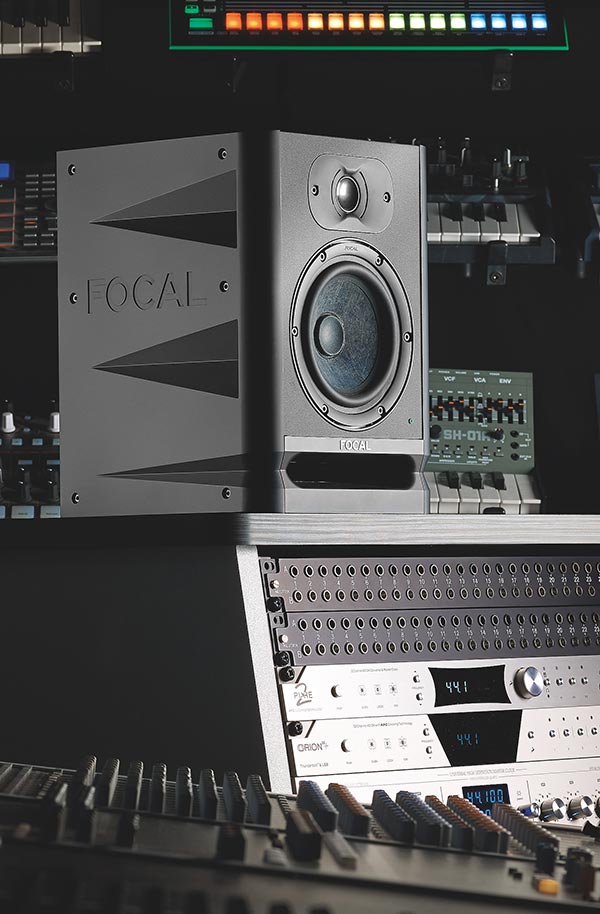

The easiest way for electronic musicians to get their music onto Spotify, Apple Music, iTunes, Amazon Music, Tidal, Instagram, Facebook, TikTok, Pandora, Twitch & much more! Click the banner above or the Go Button to save 7% off of your signup! GO!

Our first reviewer works as a sound designer for a major software company and added the 65 Evo’s to his studio rig to see how they would perform as an alternative to his mid-fields. Being a studio that was designed and treated professionally, no tuning was required using the Focal’s rear filters. “While the Alpha 65 Evo’s would certainly benefit from a sub, I thought the bass response was accurate and fluid without the chaffing that ported near-fields can exhibit at volume.” That said, he did feel there was some upper mid-range distortion between 2k and 9k that was apparent when creating certain types of effects, but were not there on his mid-fields.
Our Deep House producer came away from his evaluation period a fan. “I think what Focal accomplished here with the revamped 65’s is commendable. There’s a nice balance between the low end and high end of the spectrum. The bottom never gets muddy and the highs don’t get brittle or too soft. I found this particularly useful for Deep House productions, especially when distinct definition is required for dialing in reverb and delays. The new Slatefiber is a clear improvement over the previous material. I found the bass to have more punch and presence without being over-hyped. I was expecting the inverted aluminum tweeter to have much more bite, but it stayed controlled and consistent. For project studios focused on electronic music looking for a symmetrical listening environment, Focal has delivered a compelling product.”
Our experimental musician appreciated the ability to tune the speakers to her small workspace. “After moving several synths to the Bird’s Nest – a fancy name I gave to a small room on the top floor of my old house with lots of windows – I realized I had a problem. The room was terrible for monitoring. Between the glass, the narrow room and the high ceiling, I was facing a lot of challenges. At first, I thought I’d just monitor with headphones since treating this type of room was beyond my pay grade, but when the opportunity arose to test Focal’s new Evo monitors, I thought it would be a great chance to see how small near-fields would perform in this awful environment.” Although, it couldn’t solve all the acoustic problems this space contained, she came away impressed on how she could modify the sound signature enough to listen to her productions, allowing her to take a break from her fatiguing headphones. “Nothing was going to cure that mess completely, but I was struck on how the HF and LF shelving controls could contour the sound signature.”
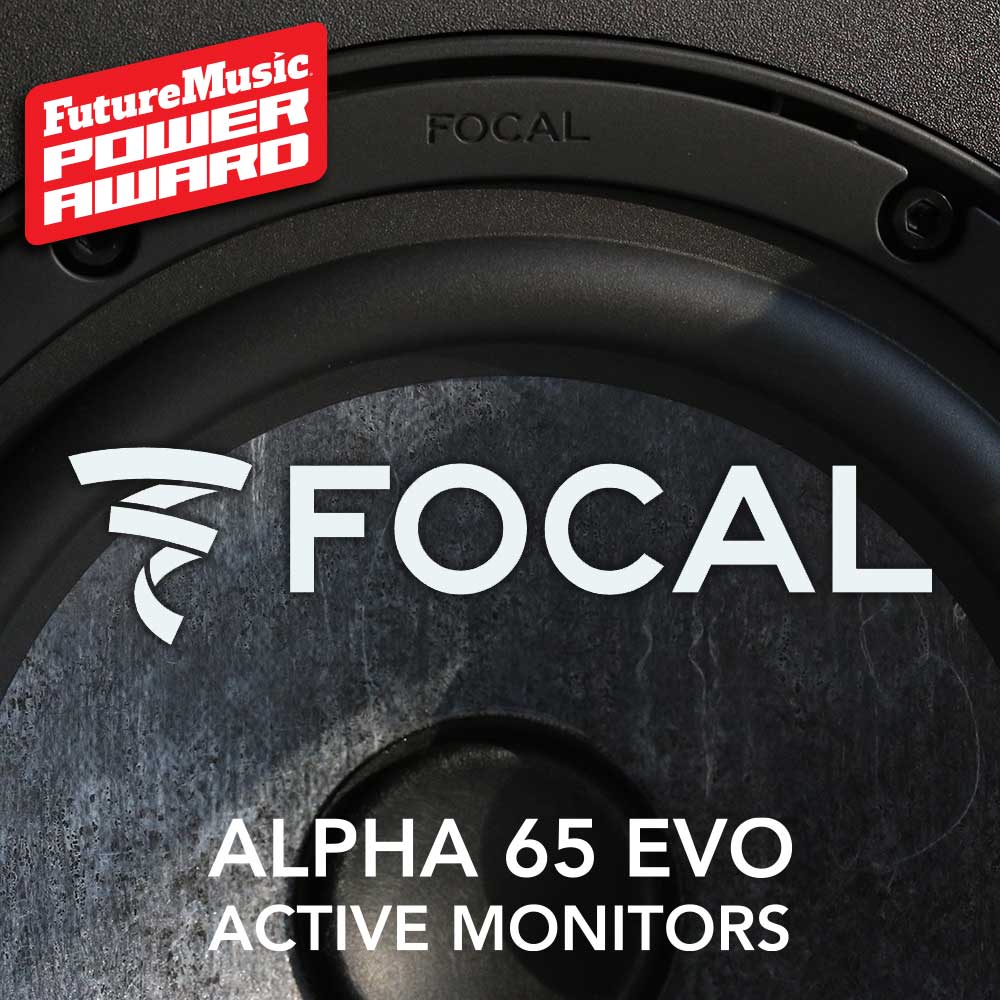
“There are a lot of amazing tools to correct your mix,” says our Hip Hop producer, “but there are three places where my mix needs to bump even before I get to the mastering process…the car, over-ear hyped headphones (i.e. Beats –Ed.) and AirPods.” Considering “the limitations of small monitors, I found the Evo’s to do a creditable job at replicating those lower frequencies,” he provided. “I would still use a quality sub to get an accurate sound picture of what’s occurring below the waist, but for a small writing room, these would work.”
Conclusion
While there are many small near-fields competing for your money out there, Focal has delivered a sophisticated near-field “that should put a serious question in the mind of buyers who naturally gravitate towards manufacturers like KRK…but realize they cut too many corners to achieve their price point.” Focal, like other brands, did have to make some concessions to make their entry-level models more affordable. Although the new Slatefiber woofers are made in France, they are shipped to China where the Alpha Evo’s are assembled. Some people have dismissed the Alpha Evo’s in this regard on the Interwebs, but our reviewers didn’t unearth any of the typical manufacturing issues that arise in some Chinese builds, even after hundreds of hours of use. Focal has created a potent monitor in the Alpha 65 Evo that will appeal anyone looking for a quality, active near-field. Highly Recommended.
Focal Alpha 65 Evo Rating: 92%
Cheers:
+ Value
+ Features
+ Aesthetic
+ Slatefiber Tech
+ Bass Port
+ Low Noise
Jeers:
– Upper Mid-Range Deviation
– Can Be Fussy Coming Out Of Sleep Mode
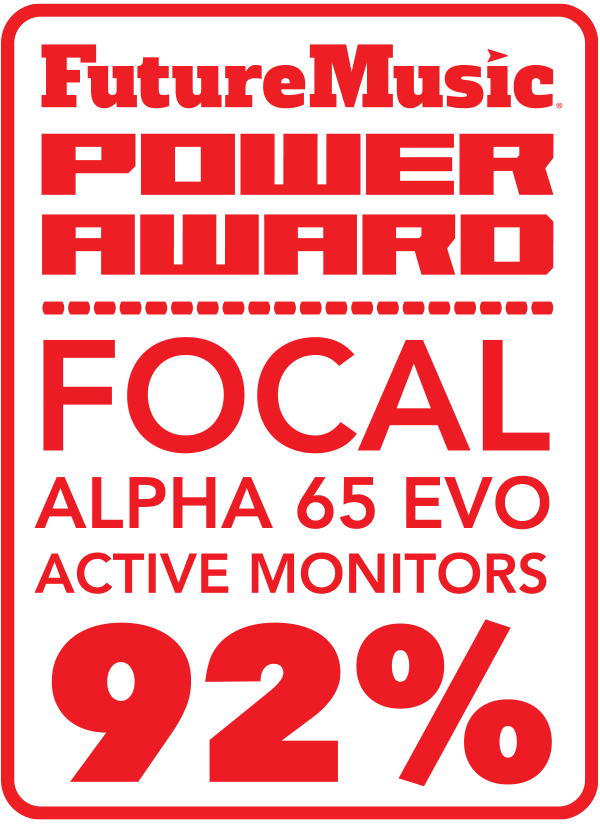
Focal’s Alpha 65 Evo monitor costs $459.99 (each) and is available now.
The Future: Focal’s 65 Evo monitors bring a lot to the table. Unfortunately, to meet the entry-level price point, Focal has to outsource the majority of the production and assembly to China, unlike their other lines, which are manufactured in France. This is where quality control can become an issue and Focal needs to immediately address any problem that may arise in order to preserve the brand integrity they’ve built up in the industry.








